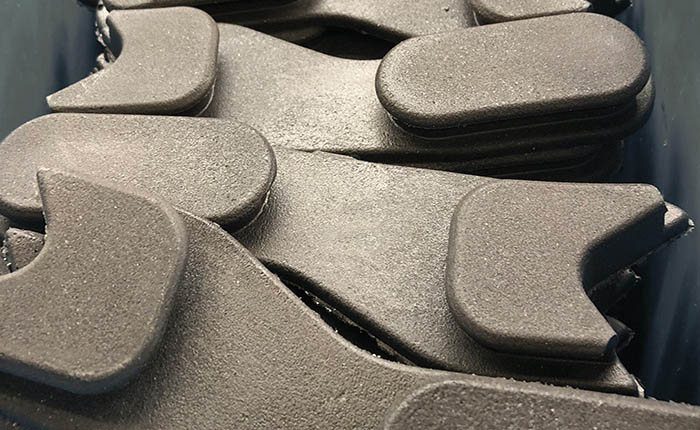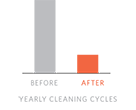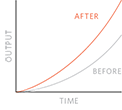Water-based release agent allows for time-saving improvements in polyurethane back foam application.

Case Study Polyurethane Back Foam:
A boost in productivity. A better end product.
WHAT WE ACHIEVED.
When a globally expanding producer of back foam — insulating and damping materials that minimize the sounds of cars, trucks, and other automobiles — was looking to make time-saving improvements, Chem-Trend stepped in to help. By introducing an advanced release agent to the operation, the customer was able to achieve multiple releases with just one product application and prolong cleaning-cycle time from one week to four weeks.
The result was a 10% improvement in productivity and a reduction in mold release agent consumption by 45% annually, while producing a higher-quality end product and a safer work environment.
HOW WE GOT THERE.
Working as an extension of the customer’s team, we searched for areas of improvement and conducted trials. With an iterative process and a short time frame, we assessed the existing process and made recommendations. The competitor product in use was yielding an extremely short clean cycle of just one week. Multiple releases could not be achieved with the product, which had to be reapplied for each demolding. When Chem-Trend’s release agent was employed, we were able to achieve multiple releases per product application.
OUR SOLUTION.
When Chem-Trend’s unique fully water-based release agent for urethane applications was employed, the customer saw up to eight demoldings per application on some parts. This dramatically reduced consumption and surpassed customer expectations in terms of savings. A safer work environment was also an important added benefit. While the competitor product left the shop floor very slippery, Chem-Trend’s solution provided a drier finish, leaving mold carrier parts less greasy and tacky which contributed to a better end product and more secure footing for workers.



DATA INSIGHTS
 4X Extended cleaning cycle
4X Extended cleaning cycle 45% Reduction in product consumption
45% Reduction in product consumption 10% Increase in productivity
10% Increase in productivityHANDPRINT IMPACT
At Chem-Trend, we pride ourselves on our long history of sustainability efforts. However, it is our effect on our customers’ processes that provides the greatest impact. It goes beyond our global Footprint; it is our even wider Handprint.
Here, we achieved the following:
- Greater overall energy reduction due to prolonged cleaning cycle
- Reduced waste of cleaning supplies due to fewer required cleanings
- Reduced product consumption due to fewer needed applications
Materials
Waste
Energy

